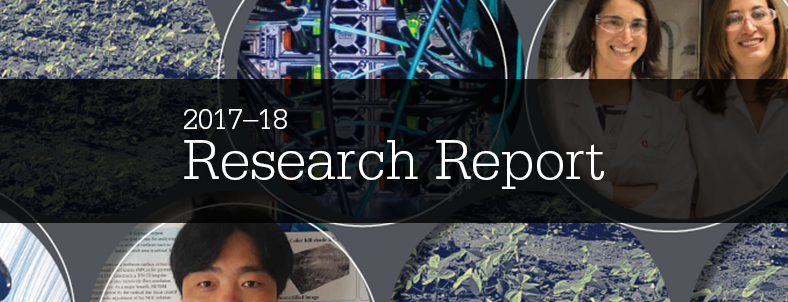If two cups sat in front of you, one blue and one purple, and someone asked you to pick up the purple one, you would know which cup to grab and how to pick it up. Have you ever thought about why? Julie Golomb, Ph.D., spends most of her days answering this question and others related to how the brain perceives, processes and memorizes sensory input. Her lab at the The Ohio State University’s department of psychology uses supercomputing resources at The Ohio Supercomputer Center to run analyses on behavioral and neural data related to visual perception.
“Vision is for most people our most dominant sense, and we get a lot of information visually,” Golomb said. “We know a fair bit about how the visual system works, at least at initial levels, but there's a lot we really don't know. So the sorts of questions that we study in our lab are things like ‘how do we perceive different colors and shapes and put them together into different objects?’”
To get a comprehensive picture of what’s going on behind the eye, Golomb’s group runs a few types of experiments, including a behavioral study that asks subjects to respond to computer tasks based on objects, colors and lights on a screen. Participants’ responses are recorded and analyzed in MATLAB. The group also informs its research through neuroimaging with functional MRI scans that show brain activity patterns and with finer temporal data from electroencephalograms, a cap with electrodes that can detect electrical brain activity.
All this data has to be modeled, including large numbers of parameters across hundreds of subjects. By using OSC’s clusters to process data, Golomb’s group receives results at least three times faster than using desktops in the lab.
“It ends up being a pretty computationally intensive process,” said Jiageng Chen, a Ph.D. student in Golomb’s lab who runs many of the tests. “We can do that without the supercomputer, but [using the supercomputer is] a lot faster.”
While Golomb’s group does not directly study vision or visual disorders, their research into discovering more about how the visual system functions could help clue other researchers into solutions for these problems.
“We have distracting stuff happening in our environment all the time… It's a really complex challenge for our brains to solve,” Golomb said. “We are constantly bombarded with visual input as we’re looking around, and we have to instantaneously put all the pieces together and know which features are part of that object or that person and not get them confused.”
Project Lead: Julie Golomb, Ph.D., The Ohio State University Department of Psychology
Research Title: Behavioral and neuroimaging investigations of perception, attention, memory, and cognition
Funding Source: NIH
Website: https://u.osu.edu/golomblab/

